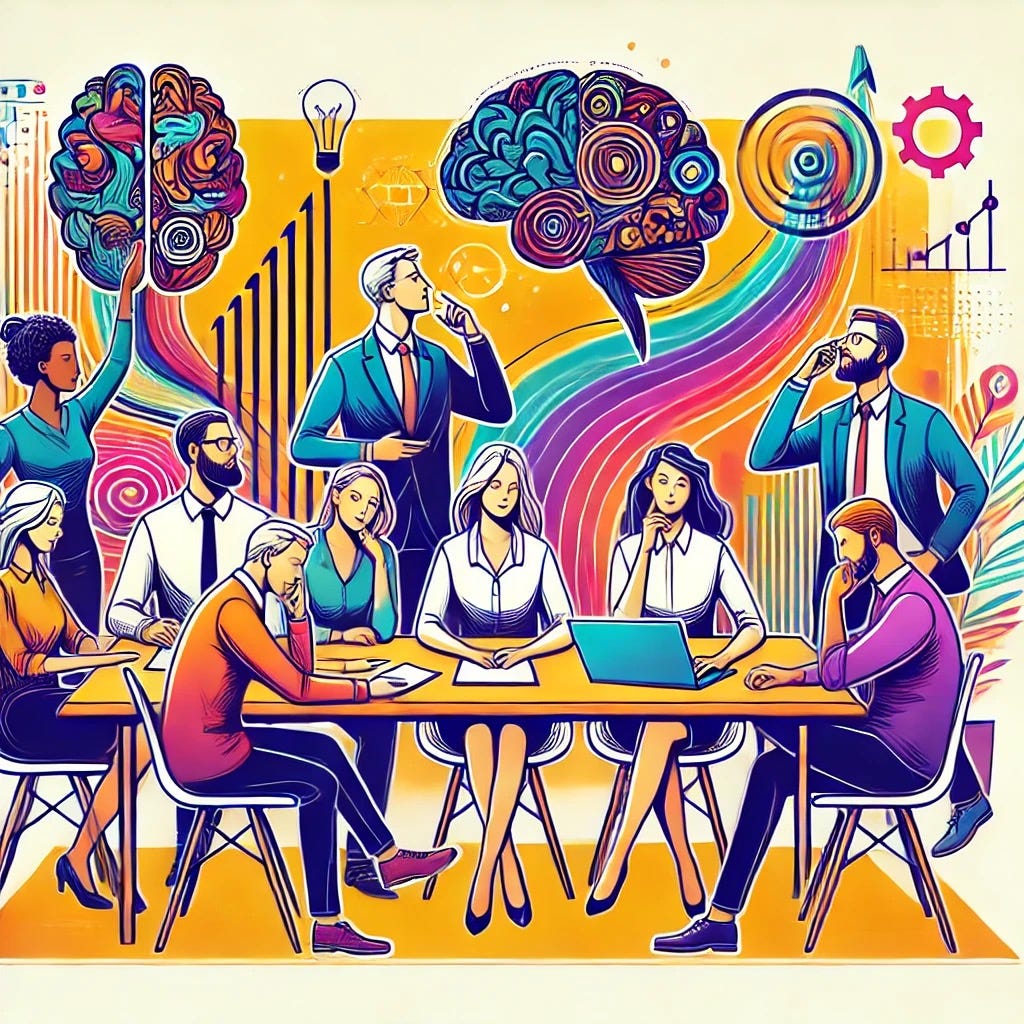The Neurodiverse Leader: Embracing ADHD as a Strength in Leadership
In today’s world of work, where agility, innovation, and empathy drive success, neurodiverse minds are uniquely positioned to shine—especially those of us with ADHD. Too often framed as a set of limitations, ADHD is, in fact, a different cognitive style that brings an arsenal of strengths to the workplace. Let’s flip the narrative and celebrate the unique perspectives and leadership skills we bring to the table, particularly those that align perfectly with today’s evolving workplace demands.
1. Creativity and Out-of-the-Box Thinking
One of the most powerful strengths of ADHD is our capacity for creative thinking. Where others see a single path, we see multiple possibilities. This divergent thinking is essential for innovation, allowing us to think beyond conventional ideas and explore new, untested solutions. In leadership roles, this creativity can inspire teams, push boundaries, and lead to breakthrough ideas that set an organisation apart.
In my experience, when faced with a complex challenge, my ADHD has allowed me to piece together unconventional insights from seemingly unrelated areas. This unique skill isn’t just about “thinking outside the box”—it’s about rebuilding the box from scratch if needed. And for organizations looking to disrupt and differentiate, that kind of mindset is a goldmine.
2. Adaptability in a Fast-Changing Environment
ADHD brains thrive on stimulation, and this drive can be an asset in a world that’s constantly shifting. Adaptability is a built-in strength, enabling us to pivot and adjust quickly without missing a beat. When faced with unexpected changes, we are wired to navigate them more comfortably than many others, maintaining momentum and keeping our teams motivated.
In leadership, this adaptability translates into resilience. Whether it’s implementing new strategies, handling crises, or shifting priorities, our brains are already wired for flexibility. My ability to embrace change with curiosity and enthusiasm has been invaluable—not just in maintaining my productivity, but in modeling a mindset of openness that encourages my team to lean into change rather than fear it.
3. Problem-Solving with a Fresh Perspective
ADHD doesn’t just help us see solutions that others miss; it compels us to seek them out. We’re natural problem-solvers, often instinctively drawn to figure out how things work, why they’re broken, and what it would take to fix them. This willingness to tackle complex issues head-on makes us tenacious, and as leaders, that determination is contagious.
In my role, I’ve noticed that my approach to problem-solving not only finds solutions but often reshapes the way my team thinks about challenges. We learn together that obstacles are not roadblocks but opportunities for growth, creativity, and resilience. This shift in mindset transforms the team dynamic, turning issues into engaging puzzles rather than daunting hurdles.
4. Empathy and a People-First Perspective
ADHD often comes with an inherent sensitivity to the feelings and experiences of others. We’re keenly aware of how neurotypical structures might make some people feel left out or misunderstood, so we’re naturally inclined toward empathy. This sensitivity allows us to tune into our teams’ needs, creating an inclusive environment where everyone feels valued and heard.
Personally, my leadership style has been deeply shaped by this empathy. I prioritize emotional safety and open communication within my team, understanding that a supportive environment brings out the best in everyone. My neurodiverse lens pushes me to think beyond traditional leadership tactics, fostering a culture where diverse minds can not only coexist but thrive.
5. Hyper-focus: A Double-Edged Sword, but an Invaluable Asset
Hyper-focus is often touted as one of ADHD’s “superpowers,” and with good reason. When something grabs our attention, we can immerse ourselves completely, diving deep into details and exploring ideas more thoroughly than many others might. As leaders, we can harness this hyper focus to dive into complex projects, analyse problems with depth, or perfect the finer details of our vision.
Of course, hyper focus is not without its challenges, as it can lead us to ignore other priorities. But when we learn to channel it effectively—by pairing it with strategies to stay on track and setting boundaries—it becomes a potent tool for driving excellence. Personally, I find that hyperfocus often helps me bring a project to life with depth and detail that wouldn’t be possible otherwise, giving my work an edge that sets it apart.
6. A Constant Drive for Growth and Learning
The ADHD brain craves novelty, and while this can sometimes be a challenge, it also fuels a relentless drive for self-improvement and skill-building. We’re lifelong learners, always seeking new knowledge, experimenting with different tools, and challenging ourselves to evolve. This thirst for growth is a powerful asset in leadership, where curiosity and continuous improvement keep us ahead of the curve.
For me, this drive has translated into a deep commitment to self-reflection and professional development. Whether it’s reading the latest research, exploring new leadership strategies, or refining my own skills, I’m always looking for ways to grow. This mindset not only enhances my effectiveness as a leader but also inspires my team to prioritize learning and adaptability.
Embracing ADHD as a Strength
If there’s one takeaway I hope to leave you with, it’s this: ADHD isn’t a weakness to be managed; it’s a different way of seeing, thinking, and engaging with the world that brings invaluable strengths to the workplace. As leaders, we don’t need to apologize for how our brains work; instead, we can lean into these differences, celebrate them, and use them to foster workplaces that value diversity in all its forms.
In embracing our unique strengths—creativity, adaptability, problem-solving, empathy, hyper-focus, and a drive for growth—we become not only effective leaders but also advocates for a future where neurodiversity is recognised as a vital asset to any organisation. Let’s continue to redefine what leadership looks like, not by conforming, but by boldly showing up as our authentic, neurodiverse selves.

